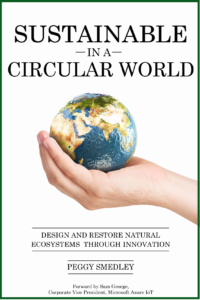The IoT (Internet of Things) space was growing before the COVID-19 pandemic hit in early 2020, and it’s growing now in its aftermath, but that’s not to say the global pandemic didn’t impact the IoT. Quite the opposite; COVID impacted the IoT’s trajectory in ways the sector is still uncovering. For instance, some priorities have shifted because of the pandemic, and some gaps have been revealed. And while it seemed like the IoT was growing by leaps and bounds before everything went down in 2020, there now appears to be even more use cases and applications for the IoT than there were before. The drive to achieve digital transformation is perhaps stronger than it’s ever been, but this wave of adoption has brought new vulnerabilities along with it.
A recently released research study from the World Economic Forum called the State of the Connected World 2023 Edition aims to examine the current state of governance gaps on the IoT and related technologies. The research suggests the pandemic “changed the face of IoT and related technologies” and bolstered demand, particularly in sectors like health, manufacturing, and consumer IoT. With the rapid uptake of IoT in many different sectors for many different applications, the survey suggests there’s a lot of uncertainty about things like safeguards against unethical uses of these technologies, a lag in policy and governance, and privacy and security issues.
More than half of respondents (51%) in the World Economic Forum’s survey said they’re not very confident that end users are protected against the unethical and irresponsible use of these technologies, and, by extension, the use of user data. Only 1% said they’re confident end users are protected. The report suggests policy and regulation can help create basic ethical frameworks for the IoT that will ensure transparency and guarantee user privacy. Privacy by design is another important point. Rather than trying to build safeguards in after the fact, devices should be built with privacy and ethics in mind from the get-go.
Cybersecurity is another area in which respondents recognize a governance gap in the IoT and related technologies. While 4% said they are confident end users are protected against cyberattacks, 26% said they’re not confident, and 47% said they’re not too confident. While end users themselves are often to blame for opening the door for a ransomware attack, policy and regulation can make a difference here, too. Alongside user education and awareness campaigns and a shift toward security by design, policies developed alongside IoT experts can help safeguard the market without trending toward over-regulation.
A third concern highlighted in the World Economic Forum’s latest study was equal access to technology. Because life and business can rely so much on access to the internet, a large portion of respondents said they’re concerned about how the IoT and connected devices are widening the technology gap. In fact, 65% said they’re not confident or not too confident in these technologies being equal access, thanks to factors such as a lack of infrastructure, a lack of digital literacy, and unfavorable economic conditions. However, as technology costs come down, accessibility is on the rise, and 45% of respondents said they feel more confident in the idea of equal access than they did three years ago. To improve equal access, the World Economic Forum suggests infrastructure investments and an increase in public policies that improve access to technology and encourage digital literacy.
Want to tweet about this article? Use hashtags #IoT #sustainability #AI #5G #cloud #edge #digitaltransformation #machinelearning #futureofwork #infrastructure #bigdata #cybersecurity #WorldEconomicForum #policy #regulation #COVID


